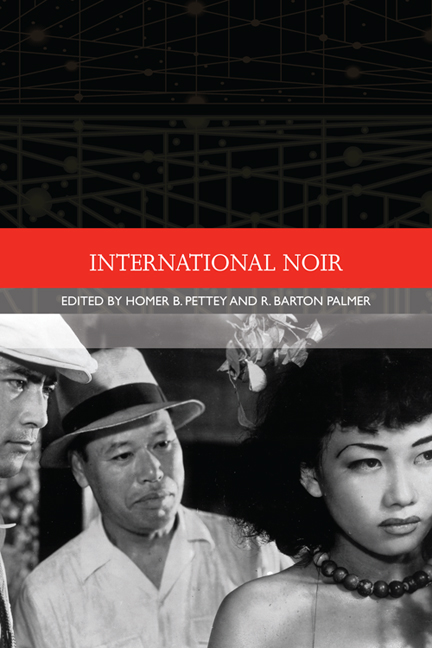Book contents
- Frontmatter
- Contents
- List of Illustrations
- Acknowledgements
- Notes on the Contributors
- Traditions in World Cinema
- Introduction: The Noir Impulse
- 1 British Noir
- 2 French Noir 1947–79: From Grunge-noir to Noir-hilism
- 3 French Neo-noir: An Aesthetic for the Policier
- 4 Early Japanese Noir
- 5 The Gunman and the Gun: Japanese Film Noir since the Late 1950s
- 6 Darker than Dark: Film Noir in its Asian Contexts
- 7 Nordic Noir and Neo-noir: The Human Criminal
- 8 Indian Film Noir
- 9 The New Sincerity of Neo-noir
- 10 Post-noir: Getting Back to Business
- Selected Bibliography of International Film Noir
- Selected Filmography of International Film Noir
- Index
2 - French Noir 1947–79: From Grunge-noir to Noir-hilism
Published online by Cambridge University Press: 05 August 2016
- Frontmatter
- Contents
- List of Illustrations
- Acknowledgements
- Notes on the Contributors
- Traditions in World Cinema
- Introduction: The Noir Impulse
- 1 British Noir
- 2 French Noir 1947–79: From Grunge-noir to Noir-hilism
- 3 French Neo-noir: An Aesthetic for the Policier
- 4 Early Japanese Noir
- 5 The Gunman and the Gun: Japanese Film Noir since the Late 1950s
- 6 Darker than Dark: Film Noir in its Asian Contexts
- 7 Nordic Noir and Neo-noir: The Human Criminal
- 8 Indian Film Noir
- 9 The New Sincerity of Neo-noir
- 10 Post-noir: Getting Back to Business
- Selected Bibliography of International Film Noir
- Selected Filmography of International Film Noir
- Index
Summary
INTRODUCTION
When I was first asked to contribute to this collection of essays on film noir, my original response was ‘surely there is enough out there already?’ Indeed, in the last decade, some hundred books on film noir have been published in the English language alone. The request, however, was to focus on French Film Noir (from 1930 to the new millennium). I felt there might be something new to say, even if (as with Borde and Chaumeton, 1955) I was not necessarily over-convinced that there is such a thing as French Film Noir; a noir aesthetic, yes – but a specific genre (or subgenre) within French cinema? But, having agreed to write a piece, I pressed forward.
My first move was to let the editors know that I did not consider I could write about French Noir from the 1930s until the present day. My view was that, if a noir period exists in its purest/purist sense, then it begins in 1947 and ends in 1979. First, with regard to the ‘start date’: whilst the term ‘film noir’ has had currency since the 1930s, referring to certain ‘dark/noir’ movies of that period which we now more readily label poetic realist films, the concept of ‘film noir’ as a genre is nonetheless a postwar phenomenon. This generic label was coined in 1946 by French film critics to designate a particular type of American thriller-genre that suddenly made its appearance in French cinemas after the end of World War II. As to the end date, there is an argument to be made (which I shall go on to do below) that the arc of French Noir coincides with what has been termed, in French economic history, les trente glorieuses, a thirty-year period of economic growth from 1947 to 1973, brought to an end by the two oil crises of 1973 and 1979, and that the demise of that economic growth (1973–9) and subsequent social decline can readily be identified with the dark nihilism of Série noire (Corneau, 1979).
Ginette Vincendeau has published several lucid and comprehensive pieces in English on the subject of French Noir. In her study, ‘Noir is also a French word: The French antecedents of film noir’, she argues for the impact of 1930s French cinema (particularly poetic realist films) on the American noirs of the 1940s and 1950s.
- Type
- Chapter
- Information
- International Noir , pp. 36 - 60Publisher: Edinburgh University PressPrint publication year: 2014



